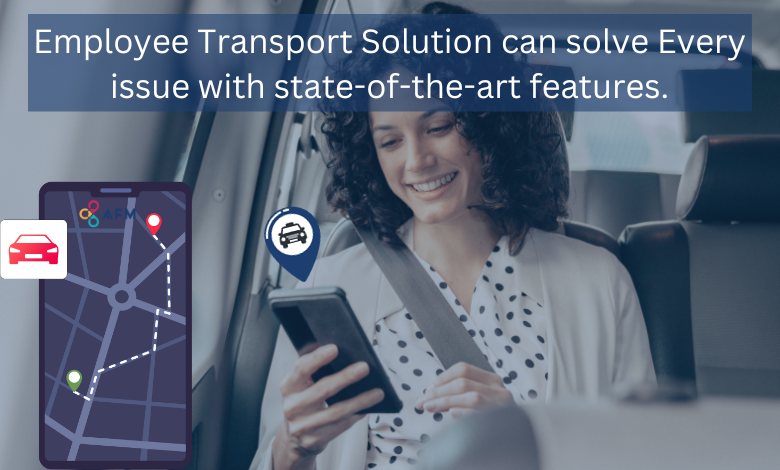Driving Success: Overcoming the 7 Common Fleet Management Hurdles Every Manager Faces

Behind the scenes of every well-managed employee transport solution, there’s a fleet manager grappling with challenges that go beyond the surface-level tasks to ensure smooth operations.
For example, issues like live tracking of the fleet, safety concerns, especially for women employees, tedious roster planning, complex route optimization, reckless driving, etc., create major issues for fleet managers and for the overall organization.
These challenges demand a unique blend of strategy and innovation, such as an employee transport automation tool.
Such a tool can help you cope with the above-mentioned challenges while offering a seamless commuting solution to your employees.
In this blog, we will address the most common fleet management hurdles and the way to address them, plus overcome them with a feature-rich employee transportation solution (ETS).
Keep reading to know more!
7 Common Fleet Management Hurdles
1. Administrative Tasks & Manual Reporting
Managing fleets involves a lot of paperwork and manual reporting, leading to inefficiencies. Automating administrative tasks can streamline operations and reduce errors in data entry.
2. Live Tracking
Real-time tracking of vehicles is another major issue. Without it, you can’t monitor vehicle locations and might struggle with improving response times and enhancing overall operational visibility.
3. Safety Issues
Ensuring the safety of drivers and vehicles is a constant challenge. Along with that, enhancing the safety of employees during odd-hour shifts is paramount to an effective ETS. Implementing safety measures, such as driver training programs and driving behavior monitoring can help mitigate risks and improve overall safety. Advanced employee safety features such as SOS alerts, provision for escorts, and IVR safe reach calls take safe commuting a notch up.
4. Route Optimization and Vehicle Maintenance
Inefficient routes lead to increased fuel consumption and operational costs. Route optimization tools can help plan the most cost-effective and time-efficient paths, reducing fuel consumption and improving delivery times.
Regular maintenance is crucial for fleet vehicles. Keeping track of maintenance schedules and implementing proactive maintenance strategies can prevent unexpected breakdowns and extend the lifespan of vehicles.
5. Compliance and Regulation
Meeting regulatory requirements and compliance standards can be challenging. Fleet managers need to stay informed about changes in regulations, implement necessary protocols, and ensure all vehicles and drivers adhere to essential guidelines and regulations.
6. Roster Planning
Fleet managers face challenges in accurately creating rosters for seamless commutes of all employees across multiple locations in the city. Ensuring vehicle allocation for various localities and managing shifts can be a daunting task for any fleet manager.
7. Driver Productivity and Satisfaction
Driver satisfaction and productivity are key factors in fleet management. Addressing driver concerns, providing training, and using performance metrics can enhance overall driver satisfaction and, in turn, improve fleet productivity.
As we have explained with the problems, an advanced and all-rounded employee transport automation solution like AFM comes with 360-degree features to address every probable obstacle and reduce the burdens of fleet managers,
It can help you put an end to the problems by providing features like-

- One-click cab request
- Automated attendance of employees
- Digitized employee transport management process
- Real-time tracking of the fleet vehicles
- Advanced route optimization using multiple maps
- Seamless roster planning and vehicle allocation
- Comes with various alert systems for employee safety
- Provision for escorts and IVR safety calls for women employees
- Reduces carbon footprint
- Provides analytics and trends, helping you make better business decisions.
Conclusion
Whether it’s eliminating tedious paperwork, ensuring employee safety, or making sure your vehicle maintenance is up-to-date, an employee transport solution can solve every issue with state-of-the-art features.
By integrating an advanced tool like AFM, streamlining administrative processes, and prioritizing vehicle, employee, and driver welfare, you pave the way for a smoother and more efficient fleet operation.
If you are curious to learn more about this amazing system, get on a call with us today!
With this solution in place, you can not only address and solve the recurring fleet management problems but also put a permanent end to them.
FAQ’S
How can an employee transport automation tool address administrative tasks and manual reporting in fleet management?
An employee transport automation tool streamlines operations by automating administrative tasks, reducing paperwork, and minimizing errors in data entry. It digitizes the reporting process, making it more efficient and less susceptible to manual inaccuracies.
How does real-time tracking contribute to overcoming challenges in fleet management, particularly in improving operational visibility?
Real-time tracking allows fleet managers to monitor vehicle locations, enhancing overall operational visibility. This capability helps improve response times, optimize routes, and ensure efficient fleet management.
What safety measures can be implemented to address concerns for women employees during odd-hour shifts in an Employee Transportation System (ETS)?
To enhance safety during odd-hour shifts, an ETS can implement measures such as driver training programs, monitoring driving behavior, and introducing advanced safety features like SOS alerts, provision for escorts, and IVR safe reach calls for women employees.
How can route optimization tools contribute to reducing fuel consumption and operational costs in fleet management?
Inefficient routes contribute to increased fuel consumption and operational costs. Route optimization tools plan the most cost-effective and time-efficient paths, reducing fuel consumption and improving delivery times.
How does an advanced employee transport automation solution contribute to addressing compliance and regulatory challenges in fleet management?
An advanced solution like AFM helps fleet managers stay informed about regulatory changes, implement necessary protocols, and ensure all vehicles and drivers adhere to essential guidelines. It aids in meeting compliance standards efficiently.
Quick Read: Top Reasons for adopting Employee Transport Automation